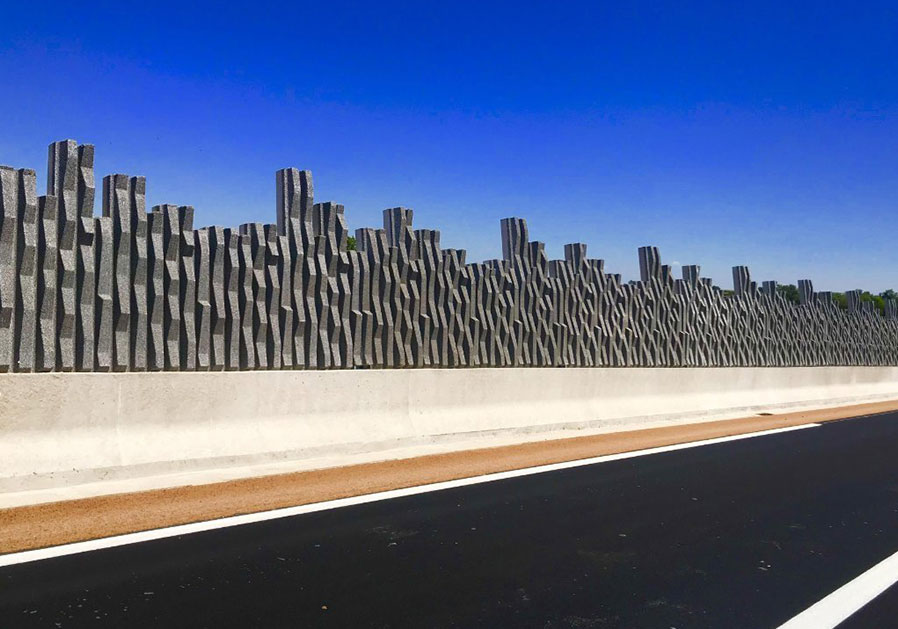NOISE BARRIERS

“Noise pollution erodes quality of life. We have developed noise barriers designed to fit every possible configuration for a bespoke solution.“
Noise pollution erodes quality of life. It is most evident along major road and rail routes, and also along tram lines and strategic road intersections. There are effective solutions that help to absorb sound waves. We have developed a range of noise barriers that are designed to fit every possible configuration for a bespoke solution.
Noise barriers have become a recognised feature of the urban and peri-urban landscape and are an essential component of urban land-use planning. Noise barriers limit noise transmission in living areas.
Our noise barriers are made of wood fibre concrete. Sound absorbing wood fibre concrete is made by adding rot-proofed wood fibres and pozzolan to a cement matrix. Once hardened, the mixture forms a lightweight concrete containing micro-cavities that trap sound waves effectively. The sound waves are reflected repeatedly off the walls of these micro-cavities, thus losing their energy which is released as heat.
Advantages of wood fibre concrete:
Durability is measured in terms of the deterioration in aesthetic, structural and sound-absorbing properties. Wood fibre concrete has gained an excellent reputation in its 35 years of use, with more than 80,000 m² erected annually in France (CERIB report P087)
Our noise barriers can be coated with temporary or permanent anti-graffiti treatment and require no specific maintenance over their life time.
Noise barriers are now a regular component of our urban landscapes and are becoming an architectural feature in their own right. Their small footprint means that they can blend perfectly into any configuration.
Our noise barriers are tested in accordance with standards EN1793-1 / EN 1793-2 / EN 1793-5 / EN 1793-6. A noise barrier’s intrinsic performance depends on the thickness of the wood fibre cement, the shape of the grooves, its imprint pattern and depth.
Noise barrier durability:
CERIB report 129-E shows that the sound absorbing qualities of barriers made with wood fibre concrete do not deteriorate over time. Even after 20 years of service, their transmission and absorption properties remain unchanged.
Our products are CE marked. Since 1st May 2007, it has been compulsory for all road traffic noise barriers sold in the European Union to have CE marking.
Standard EN 14388 sets out how to measure and describe road traffic noise barrier performance without fixing minimum values.
Our Research & Development Dept. is constantly seeking ways to improve our concretes and optimise noise barrier integration into the urban landscape. We have developed a low-level barrier design (1.20 m max.) that improves the urban soundscape.
Erected along tram lines, or bordering city squares or parks, these noise barriers represent a fusion between acoustic protection and urban planning requirements, with the added advantage of being able to include planters, benches or bike stands.
View our range of custom-designed noise barriers!